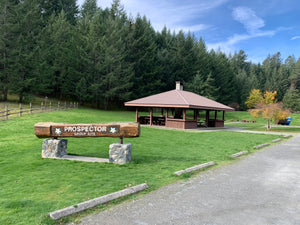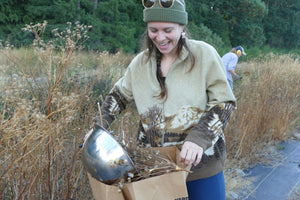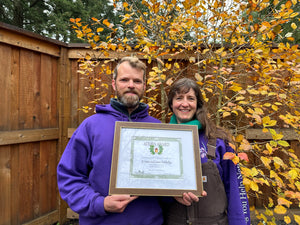We've got bulbs! Great Camas bare bulbs available now

Great Camas bulbs restocked!
It is bulb planting season...
Fall and early winter are ideal seasons to be planting bulbs. We have limited stock of beautiful, healthy mature Great Camas bulbs available for $6 each or 2 for $10 at flowering age. There is a variety of sizes, the first orders get the largest bulbs, and it is first-come first-served! These will not last long so order soon.
Order Now
So what is Great Camas?
A stunning perennial wildflower in the Asparagus plant family with purplish-blue flowers (or sometimes even white) and a large edible* bulb. Yellow, pollen-packed stamens contrast against the colourful tepals and the large, open flowers draw in a rich diversity of pollinators. The bulbs of Great Camas divide readily in deep, rich soils and can be grown in full sun to partial shade.
Plant Details
- habitat: Meadows and woodland edges
- light: Full sun to part shade
- moisture: Dry to mesic soil
- height: 20 to 100 cm
- flowering: May to June
- habit: Perennial herb from bulb
- advantages: Edible* bulb, Attracts pollinators
- companion plants: Western Buttercup, Red Columbine, California Brome, Blue Wildrye, Nodding Onion, Western Buttercup, Prairie Woodrush, Barestem Desert-parsley, California Oatgrass, Junegrass, Chocolate Lily, Menzie's Larkspur, White Fawn-Lily
Tips for Growing Camas
When do I plant them?
Now! Fall and spring are actually both important growing seasons for camas, and need to be in soil in the fall to thrive and add growth. Put them in the soil directly outdoors in mid to late fall with the roots down and the pointy end up.
How deep do I plant them?
Camas bulbs like to be planted deeper than most, about three times as deep as they are long (6 to 20 cm), and will actually travel deeper into the soil depending on the season, moisture availability, and climate conditions.
Why are they different shapes?
Camas bulbs will even dig themselves deeper if needed. They will utilize their contractile root, which is a special type of root that lengthen and shorten to pull the bulb deeper into the soil and shift their shape as they burrow deeper. That is why some bulbs are long and skinny! Both shapes are ready to plant now.

How is Great Camas different from Common Camas?
At first glance, both Common and Great camas flowers look similar. Upon closer inspection, you will see a difference on the flowers themselves. Great Camas generally has radially symmetric flowers with tepals that twist together over the developing fruit as the flowers fade. Common Camas flowers typically have somewhat bilateral symmetry with five upward curving tepals and one downward pointed one. These tepals wither separately after pollination and spread away from the fruit rather than enclosing it. Great Camas can get slightly taller than Common (up to 100 cm, compared to 70 cm) and tend to flower slightly later in spring.
The primary difference lies in the conditions each prefer. Great Camas can handle full sun to partial shade, whereas Common Camas requires full sun only. Great Camas prefers deep, rich soils, whereas Common Camas tolerates very dry, shallow soils as well as being flooded in winter in clay soils.
How is it edible?
*Edibility depends on the preparation of the plant. Always do your own research prior to consuming plant parts and eat at your own risk. This plant is rich in local Indigenous food traditions, we strongly recommend that non-Indigenous people take time to study and understand the complexities of the species before using or consuming this or other native plants. We recommend learning in a good way first-hand as is possible, or proper resources such as the book Saanich Ethnobotany by Nancy Turner and Richard Hebda.
Order Now
- Tags: botany pollinators restoration sale
- Satinflower Nurseries








